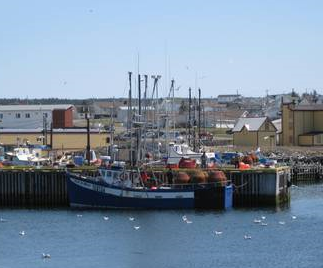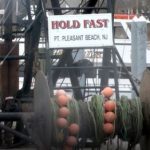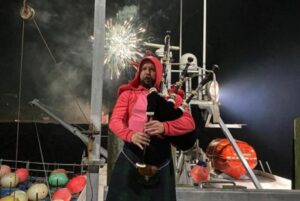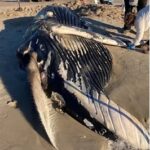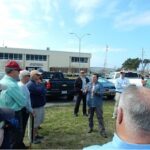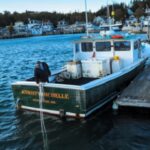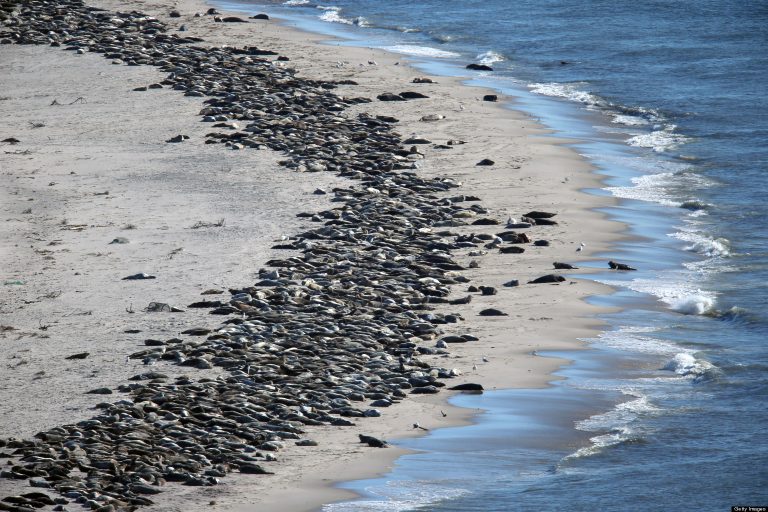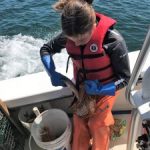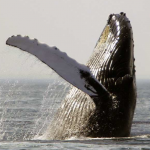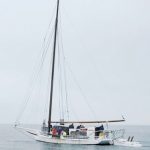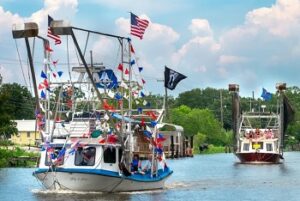Tag Archives: fishing grounds
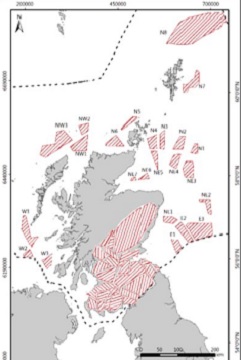
Is the fishing industry irrelevant to our governments?
Now our governments are auctioning off vast areas of valuable seabed to wind farm developers, with the apparent approval and encouragement of our own Shetland Islands Council. Proposed area’s presented for consideration when combined, would cover roughly half the area of the Scottish mainland. This would exclude the fishermen from having access to some of the richest and most prolific fishing grounds in Europe. >click to read< 18:00
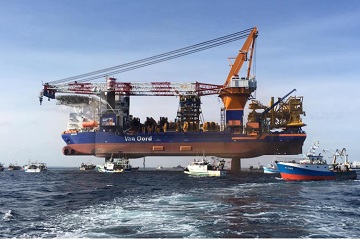
Fishermen oppose offshore wind farm, opposition to construction on fishing grounds continues,,,
The construction of the Saint-Brieuc offshore wind farm with 62 wind turbines, each with an 8mW generating capacity, began on the 3rd May this year, while the fishing industry continues to voice its opposition to the project. The Normandy fishermen held a demonstration both on shore and on the water, while others in the Hauts-de-France region and elsewhere, demonstrated in solidarity with their colleagues in Brittany. In a demonstration of anger, on 7th May fishermen took their protests against the construction out to the offshore site. 70 fishing boats surrounded the Aeolus installation vessel in the Bay of Saint-Brieu,,, photos, >click to read< 11:40

Fighting for the fishing grounds in the face of offshore wind farms
For almost a half century, Angela Sanfilippo has spearheaded campaigns to protect the physical and economic health of commercial fishermen, their families and the communities in which they live.,, The Vineyard Wind 1 project is positioned as the primary vanguard in the development of U.S. offshore wind farms. The project calls for the installation of 84 wind turbines about 12 miles south of Martha’s Vineyard. Beyond the benefits of clean energy and conservation, developers say the project also will create 3,658 full-time jobs in Massachusetts between 2019 and 2047. “Nowhere have they said how many people, how many fishermen, they’re going to displace,” she said. “It’s like we don’t exist and the fishing grounds don’t exist.” >click to read< 08:13
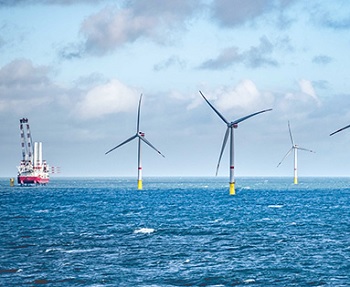
Offshore wind to have major ‘adverse’ effects
Offshore wind farms could have a major “adverse” impact on commercial fisheries, according to a long-awaited analysis from the Interior Department released yesterday. The Bureau of Ocean Energy Management’s draft supplemental environmental review for Vineyard Wind, the first anticipated large-scale wind project in the United States, arrives nearly a year after a final decision on the project was expected. BOEM delayed a final environmental analysis at the eleventh hour last summer and announced the launch of the supplemental review, arguing that the rapid expansion of offshore wind proposals and coastal state wind procurement policies necessitated a broader examination of wind’s foreseeable impacts >click to read< 14:37
RODA Receives NMFS Grant to Convene State of the Science Symposium on Fishing and Offshore Wind Interactions – The Responsible Offshore Development Alliance (RODA) has received a $150,000 grant from the National Marine Fisheries Service (NMFS) to aggregate existing knowledge, then convene a first-of-its-kind symposium on the current science regarding fisheries and offshore wind interactions. The project, “Understanding the State of the Science,” will advance agency, fishing industry, offshore wind energy developer, and public understanding of existing research on interactions between the two industries. >click to read<
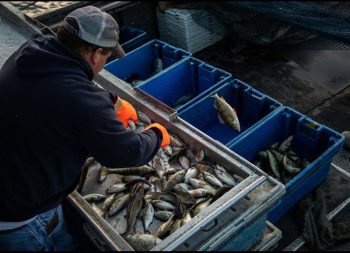
In the Great Lakes’ most productive fishing grounds, algae-fueled dead zones are eroding livelihoods
From his lakefront dock in Crystal Rock, 70 miles west of Cleveland, Dean Koch still gleefully reminisces on his career as a commercial fisherman in the heyday. At his first industry meeting in Sandusky in the late 1960s, fishing moguls booked the entire Holiday Inn and filled all the rooms. Back then, fishermen set hundreds of miles of gill nets and thousands of trap nets in Lake Erie.,, Now, Koch, 70, says, the number of fishermen who hold commercial licenses could sit around the small round table in his garage. >click to read< 08:22
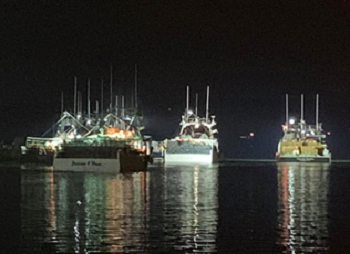
Fall lobster fishery now underway in Digby and rest of LFA 35 district
Lobster Fishing Area (LFA) 35 opened at 12:01 a.m. on Oct. 14 with the 93 full time and four part-time licence holders in the district heading to the fishing grounds in the upper Bay of Fundy. “When the season opens and the Digby fleet is coming through the gut,” looking from Delap’s Cove, “there’s a false sunset inside the Annapolis Basin,” said Colin Sproul, president of the Bay of Fundy Inshore Fishermen’s Association. “There’s 60 or 70 boats coming out of there with four or five crabs’ lights each. You can see it right over the north mountains. It’s unbelievable. It’s like a sunset coming out of the basin at midnight.” >click to read< 18:40
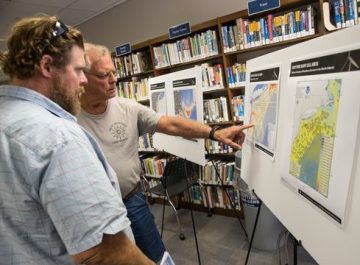
Offshore wind energy: fishermen ask for relief
Offshore windmills may be the future of energy here, but they’re presently a source of agitation to commercial fishermen. A vocal group of them, who aren’t necessarily opposed to windmills but just the placement of them on or near fishing grounds, which if you ask them is anywhere the water is salt, gave the Bureau of Ocean Energy Management their two cents at a public meeting Thursday. “All of these areas are prime scallop grounds. We’re not going to take any of this lying down,” said Arthur Osche, a member of the Point Pleasant Fishermen’s Dock Co-operative. Osche was referring to fishing grounds in Hudson North and Hudson South, two designated wind farm lease sites that start about 17 miles east of the coastline here. Fellow co-operative dock member Jim Lovgren said if their access to the grounds is restricted then they should be paid for the economic loss. “Mark off the area and then compensate us,” said Lovgren. >click to read<

A mighty wind, by Kevin Gray – The more you read, the dirtier it gets.
Jeff Grybowksi likes to tell the story about the whale.,,, For Grybowksi and his surrogates, as well as for the powerful environmental groups blowing wind into his green-energy sails, this is a handy anecdote, one they frequently recycle to journalists and policy makers. In the face of commercial fishermen’s warnings that Deepwater’s wind farms will kill their industry, Grybowksi’s parable portrays the company as a true steward of the environment. At the same time, the story underscores the brinksmanship that has propelled Grybowski’s company from startup obscurity to leading player in the booming domestic offshore wind trade: They are ready to go down to the wire for the sake of their hedge-fund investors.,,, But not everyone out here is impressed by Deepwater’s plans, or by Grybowski, or his whale. >click to read<10:52
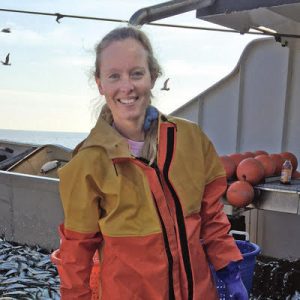
Offshore Wind Projects’ Impact on Fishing Grounds off the Ocean City Coast Discussed
After hearing a strong presentation from a noted expert on the impacts of wind farms on commercial fishing, the Mayor and Council seem inclined to strengthen opposition to the wind farms off the resort coast in general.,, Monday’s presentation was spearheaded by Meghan Lapp, who is the fisheries liaison for Seafreeze Ltd., a Rhode Island-based company that is the largest producer of sea-frozen fish on the east coast. The highly-decorated Lapp also serves on numerous fishery management councils up and down the east coast including the mid-Atlantic region. Joining Lapp during Monday’s presentation to the Mayor and Council were a handful of local commercial fishermen, most of whom have been working the seas off the Ocean City coast for generations. >click to read<09:46
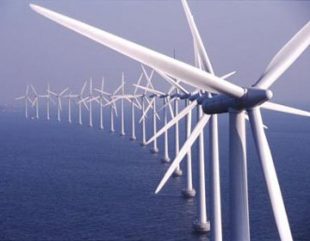
N.J. Governor asks feds for six-month extension to assess impact of offshore wind farms on state’s main fishing grounds
Gov. Phil Murphy is asking the federal government to extend the public comment period on proposed new lease sales for offshore wind in the New York Bight, a step that could delay the process for up to six months. In a letter to Ryan Zinke, Secretary of the Interior, the governor requested more time (180 days) because the areas in New York under consideration for wind-energy development include New Jersey’s main fishing grounds, including two that are closest to its coast. >click to read<08:44

Winds of worry: US fishermen fear forests of power turbines
East Coast fishermen are turning a wary eye toward an emerging upstart: the offshore wind industry. In New Bedford, Massachusetts, the onetime whaling capital made famous in Herman Melville’s “Moby-Dick,” fishermen dread the possibility of navigating a forest of turbines as they make their way to the fishing grounds that have made it the nation’s most lucrative fishing port for 17 years running. The state envisions hundreds of wind turbines spinning off the city’s shores in about a decade, enough to power more than 1 million homes.,, “Fishermen are losing ground one a nibble at a time,” said Joseph Gilbert, a Stonington, Connecticut fisherman who owns boats that range from Virginia to Maine. click here to read the story 12:30
LI fishing grounds mapped as wind farm plans take shape
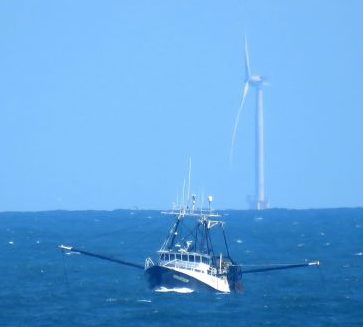 More than a dozen Montauk fishermen have met with state officials to mark off vital fishing areas on a map that will help determine the best places for the hundreds of offshore wind turbines anticipated for the waters off Long Island. Led by the Long Island Commercial Fishing Association, the group included trawl-boat captains, lobstermen, gill netters and trappers, each determined to preserve their fishing grounds as plans for wind-energy farms take shape. New York State’s offshore wind plan foresees some 2,400 megawatts of wind-turbines in New York and surrounding waters. That is likely to translate to around 240 turbines. click here to read the story 18:49
More than a dozen Montauk fishermen have met with state officials to mark off vital fishing areas on a map that will help determine the best places for the hundreds of offshore wind turbines anticipated for the waters off Long Island. Led by the Long Island Commercial Fishing Association, the group included trawl-boat captains, lobstermen, gill netters and trappers, each determined to preserve their fishing grounds as plans for wind-energy farms take shape. New York State’s offshore wind plan foresees some 2,400 megawatts of wind-turbines in New York and surrounding waters. That is likely to translate to around 240 turbines. click here to read the story 18:49
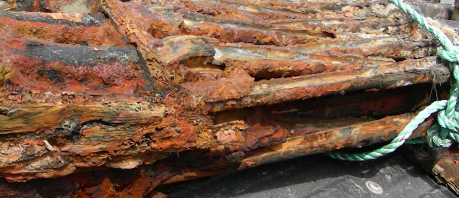
Fishermen Discover Crate Of 19th Century Rifles Off The Coast Of Canada
In 2011, fishermen working off Newfoundland’s Grand Banks pulled in a 600 pound catch. However, what they caught was not a fish. What they discovered was a heavily cemented and silt-filled crate of 20 Pattern 1853 Enfield muskets that date back as far as the 1850’s. The guns had been underwater at the bottom of the Atlantic Ocean for more than 150 years. The archaeology department at Memorial University in St. John’s Newfoundland has been working ever since to restore the relics that have been placed in a large container filled with a chemical solution that includes a bulking agent and corrosion inhibitor designed to stabilize them. After years of conservation work, things are looking good for the restoration process. The “3-band Enfield” got its name as it could get shots out to 500 yards if shot by a skilled marksman and the barrel was held to the wooden stock by three metal bands. Read the story here 16:26






